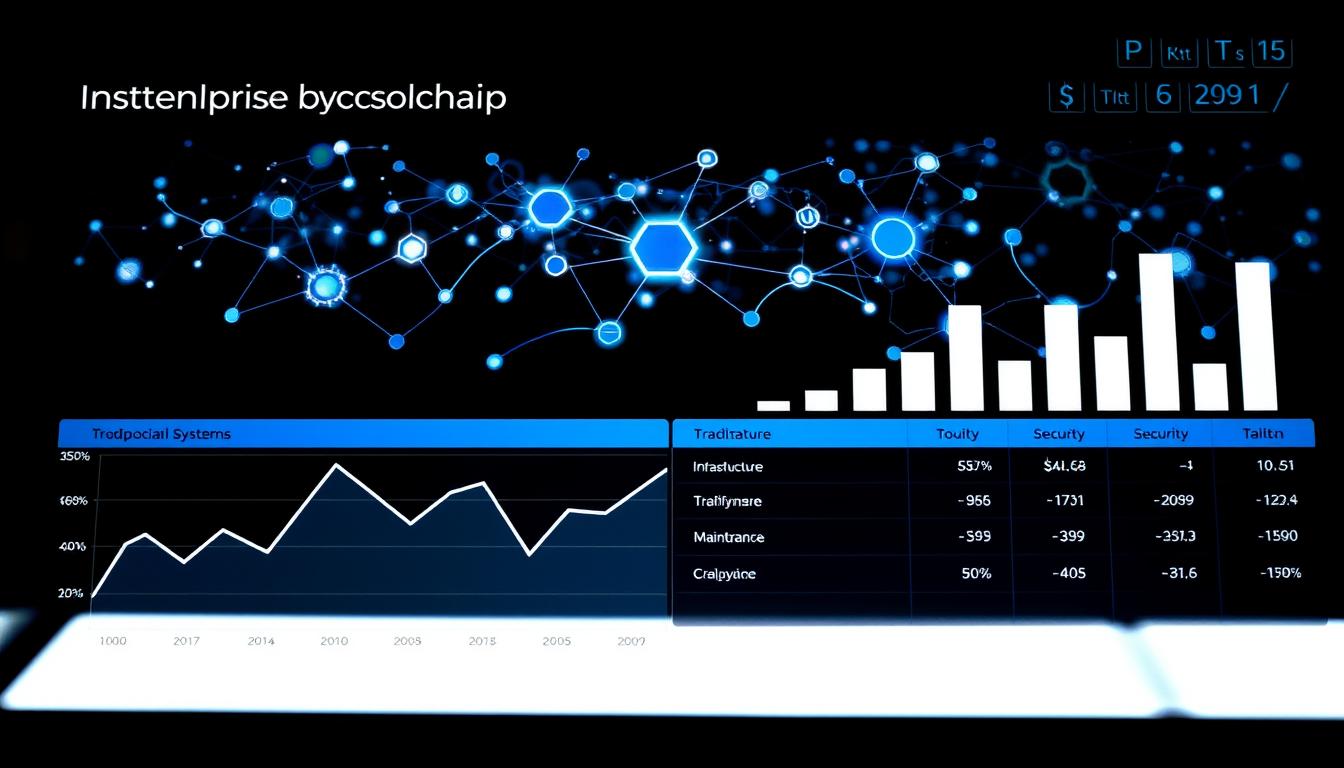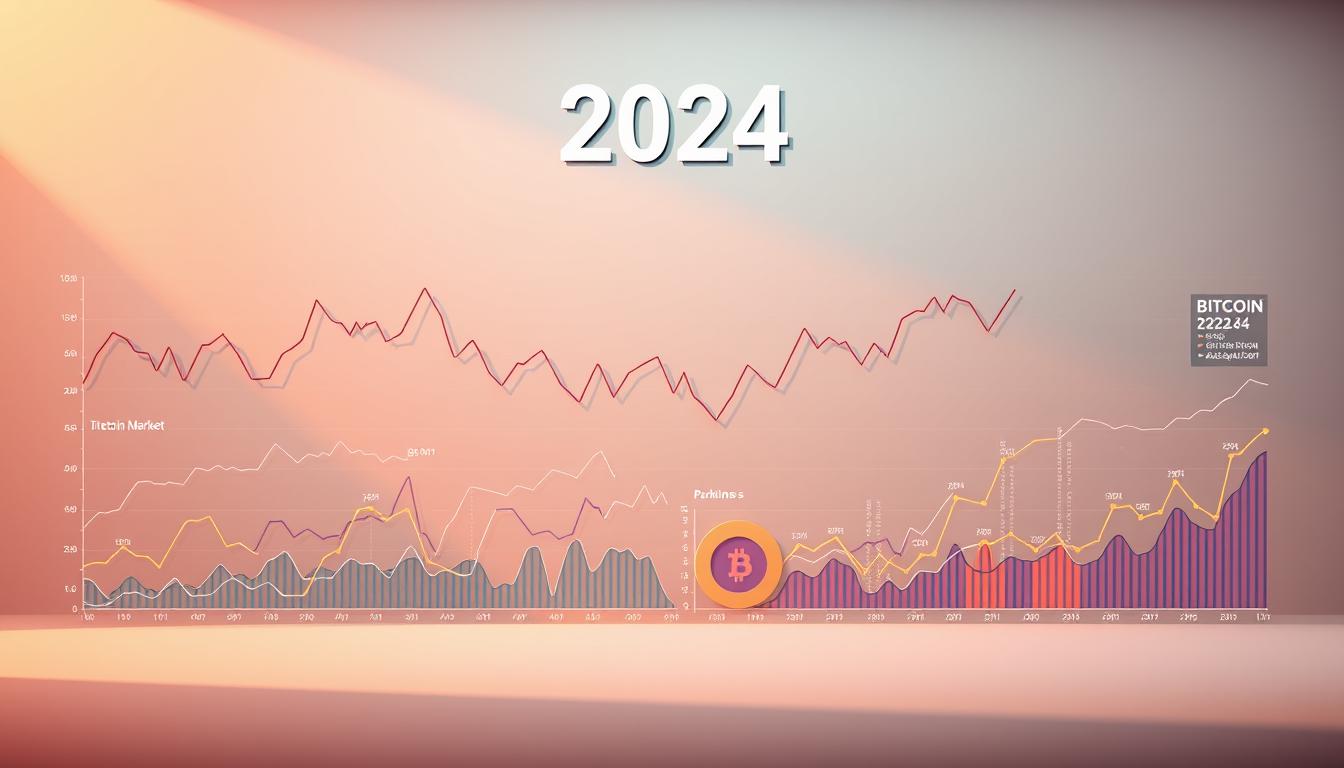Now Reading: Calculating the Cost of Blockchain for Enterprise Adoption
- 01
Calculating the Cost of Blockchain for Enterprise Adoption
Calculating the Cost of Blockchain for Enterprise Adoption

Adopting distributed ledger technology requires more than just enthusiasm—it demands a precise financial blueprint. For large organizations, understanding the full scope of expenses tied to decentralized systems is the first step toward unlocking efficiency gains and long-term value.
Technical investments like custom smart contract development and node infrastructure often dominate initial budgets. However, operational costs—including integration with legacy systems and compliance audits—can reshape the financial landscape. Industries like finance and supply chain management face unique challenges, from data privacy requirements to cross-border transaction fees.
Return on investment becomes measurable when businesses align their adoption strategy with industry-specific pain points. Companies that navigate these complexities effectively often gain advantages like reduced fraud risks and real-time supply chain visibility. The key lies in balancing upfront expenditures with scalable solutions that grow with organizational needs.
Key Takeaways
- Comprehensive expense analysis prevents budget overruns in technology transitions
- Infrastructure maintenance and security protocols create recurring operational costs
- Industry-specific regulatory requirements directly impact implementation timelines
- Scalability planning reduces long-term adaptation expenses
- ROI measurement should account for both tangible efficiencies and strategic positioning
1. The Enterprise Blockchain Adoption Imperative
Global market shifts now push enterprises to treat blockchain adoption as a survival strategy rather than an innovation experiment. Industries facing data vulnerabilities and operational inefficiencies increasingly view distributed ledger technology as critical infrastructure. This urgency stems from three key drivers reshaping corporate priorities.
Digital Transformation Pressures
Traditional systems struggle with modern demands for real-time data sharing and audit trails. Financial institutions face 45% higher compliance costs when using legacy databases compared to blockchain solutions. Healthcare providers report 60-hour delays in cross-institution patient data verification – delays blockchain can eliminate.
Competitive Advantages Enabled
Early adopters gain measurable benefits across operational metrics:
| Metric | Traditional Systems | Blockchain Solutions |
|---|---|---|
| Transaction Reconciliation | 3-5 business days | Real-time |
| Fraud Detection Rate | 67% | 92% |
| Supply Chain Visibility | Partial (45%) | Full (100%) |
Industry-Specific Use Cases
Practical implementations demonstrate blockchain’s versatility:
- Supply Chain: Walmart reduced food traceability time from 7 days to 2.2 seconds using IBM’s Food Trust network
- Finance: JPMorgan’s Onyx network processes $6 billion daily in blockchain-based payments
- Healthcare: Mayo Clinic prototypes enable secure patient data sharing across 30+ hospitals
These implementations prove blockchain’s capacity to solve industry-specific pain points while creating new revenue streams. The technology’s ability to reduce distributed ledger costs through automated processes makes it essential for maintaining market relevance.
2. Blockchain Implementation Cost for Enterprise Companies
Enterprise blockchain adoption requires careful analysis of both upfront investments and long-term operational expenses. Companies must evaluate how infrastructure choices, development complexity, and consensus mechanisms impact total ownership costs. Let’s examine the financial components that shape implementation budgets.
Core Cost Components Breakdown
Blockchain deployments involve three primary expenditure categories:
Infrastructure Requirements
Infrastructure costs vary significantly between hybrid blockchain architecture models and fully decentralized networks. On-premise solutions require:
- High-performance servers ($15,000-$50,000 each)
- Enterprise-grade storage systems ($0.25/GB monthly)
- Network security appliances ($8,000-$25,000 upfront)
Development Resources
Building custom blockchain solutions demands specialized expertise:
- Blockchain developers ($120-$250/hour)
- Smart contract auditors ($15,000-$40,000 per audit)
- Integration specialists for legacy systems
Operational Overheads
Ongoing node maintenance expenses account for 35-60% of long-term costs:
- Energy consumption: 500-1,500 kWh per node monthly
- Technical staff salaries ($90,000-$160,000 annually)
- Software license renewals (15-25% of initial cost)
Cost Variance by Consensus Mechanism
Consensus protocols dramatically affect implementation budgets:
| Cost Factor | Proof-of-Work (PoW) | Proof-of-Stake (PoS) |
|---|---|---|
| Energy Consumption | 1,100 kWh/node/month | 55 kWh/node/month |
| Hardware Costs | $18,000/node | $4,500/node |
| Maintenance Labor | 25 hours/month | 8 hours/month |
PoW systems incur 4-6x higher node maintenance expenses than PoS alternatives. However, PoS requires larger upfront token investments ($50,000-$200,000 per validator node). Hybrid blockchain architecture models can balance these tradeoffs, combining private network efficiency with public chain security.
3. Infrastructure Investment Requirements
Enterprise blockchain adoption demands strategic infrastructure decisions that directly influence long-term financial outcomes. Choosing between on-premise, cloud, or hybrid systems requires analyzing upfront costs against scalability needs and enterprise blockchain ROI over 3-5 year horizons.
On-Premise vs Cloud Solutions
Companies face critical tradeoffs when selecting deployment models. On-premise systems offer control but require substantial initial investments, while cloud platforms provide flexibility with operational expense models.
Hardware Acquisition Costs
Self-hosted blockchain networks demand:
- Enterprise-grade servers ($15,000-$50,000 per unit)
- Storage arrays with RAID configurations
- Enterprise blockchain ROI
AWS Quantum Ledger Database reduces hardware costs by 60% compared to traditional on-premise setups, according to 2023 enterprise tech surveys.
Network Configuration Expenses
Building secure peer-to-peer networks involves:
- VPN setup and maintenance
- Load balancing infrastructure
- Latency optimization for real-time consensus
Hybrid Architecture Considerations
Combining on-premise and cloud solutions balances cryptographic security costs with scalability needs. Hyperledger Fabric deployments in hybrid models show 35% lower TCO than pure cloud solutions over five years.
| Cost Factor | AWS QLDB (5 yrs) | Hyperledger (5 yrs) |
|---|---|---|
| Infrastructure | $1.2M | $890K |
| Security | $310K | $410K |
| Maintenance | $180K | $240K |
Hybrid models particularly benefit organizations needing compliance with data sovereignty laws while maintaining cloud scalability. The sweet spot emerges when 40-60% of infrastructure resides in private clouds.
4. Development & Integration Expenses
Enterprise blockchain implementation requires meticulous planning for both new development and legacy system adaptation. Technical complexity and interoperability demands often create unexpected budget spikes, particularly when merging decentralized architectures with existing IT ecosystems.
Smart Contract Development Costs
Platform selection dramatically impacts development budgets. Ethereum’s Solidity-based contracts average $25,000-$50,000 for basic business logic due to:
- Gas fee optimization requirements
- Security audit necessities
- ERC standard compliance checks
Corda’s Kotlin framework shows 30% lower initial costs for financial applications. However, its closed ecosystem increases long-term maintenance expenses. Development teams require specialized training in platform-specific languages, adding $120-$150/hour per developer.
| Cost Factor | Ethereum | Corda |
|---|---|---|
| Hourly Development Rate | $160-$220 | $180-$240 |
| Transaction Validation | Network Fees | Peer-to-Peer |
| Testing Environment | Public Testnets | Private Networks |
Legacy System Integration Challenges
Connecting blockchain layers to ERP systems like SAP requires custom middleware solutions. Financial institutions report spending 40% of implementation budgets on integration tasks alone.
4.2.1 API Development Requirements
REST API creation for SAP integration averages 300-500 development hours. Critical components include:
- Bi-directional data synchronization
- Real-time transaction mapping
- Legacy protocol conversion
4.2.2 Data Migration Complexities
Healthcare providers face unique challenges migrating patient records to blockchain. A recent hospital network project required:
- HL7 to JSON data transformation
- HIPAA-compliant encryption layers
- 72-hour downtime contingency planning
Cross-chain integration adds another layer of complexity, with middleware solutions costing $15,000-$30,000 per connected system. Proper API gateways reduce these expenses by 18-22% through standardized data formatting.
5. Operational Expenditure Considerations
Enterprises must evaluate long-term operational costs when deploying blockchain networks. These expenses often determine ROI and influence platform sustainability. Three critical factors shape ongoing expenditures:
Energy Consumption Patterns
Blockchain energy costs vary dramatically by consensus mechanism. Proof-of-Work (PoW) systems consume 10-100x more electricity than modern alternatives. Consider these comparisons:
| Consensus Mechanism | Energy Use (kWh/tx) | Enterprise Use Cases |
|---|---|---|
| Proof-of-Work | 950-1,200 | Rarely used in modern implementations |
| Proof-of-Stake | 0.01-0.1 | Supply chain, financial services |
| Delegated PoS | 0.005-0.03 | Healthcare data exchanges |
Leading enterprises now prioritize energy-efficient protocols to meet ESG goals. Hybrid architectures combining PoS and practical Byzantine fault tolerance (PBFT) reduce power needs by 89% compared to traditional systems.
Node Maintenance Costs
Validator node staffing costs account for 22-35% of operational budgets. Key expenses include:
- 24/7 monitoring personnel ($85,000-$140,000 annual salary)
- Hardware refresh cycles every 18-24 months
- Security patch implementation
Protocol upgrade management becomes critical as networks scale. Enterprises report 15-20% higher node maintenance expenses when operating custom blockchains versus standardized platforms.
Transaction Validation Expenses
Validation costs depend on network size and transaction complexity. Public chains using energy-efficient validation methods show 40-60% lower per-transaction fees than private networks. However, private chains offset this through:
- Bulk transaction processing
- Optimized consensus rules
- Redundant node elimination
Hybrid models now dominate enterprise use, blending cost-effective validation with required performance levels. Regular audits help maintain optimal validation expense ratios as networks evolve.
6. Compliance & Regulatory Costs

Enterprise blockchain adoption introduces complex regulatory requirements that significantly impact budgets. Organizations must navigate evolving data protection laws, financial transparency rules, and international trade regulations. These obligations create both upfront implementation costs and ongoing compliance expenses.
GDPR Implementation Requirements
Meeting EU General Data Protection Regulation standards adds 18-25% to blockchain development costs for US companies. Privacy-by-design implementations require:
- Data minimization protocols for distributed ledgers
- Right-to-erasure technical solutions
- Encrypted data storage with access controls
Financial institutions spend $140,000-$250,000 annually on GDPR-compliant blockchain tools. This includes specialized data management systems and audit trail generators.
Financial Reporting Obligations
The FATF Travel Rule mandates cryptocurrency transaction monitoring, costing enterprises $85-$120 per validated transaction. Key expenses include:
| Requirement | Average Cost | Implementation Time |
|---|---|---|
| Beneficiary Identification | $45,000 | 3-5 months |
| Audit Trail Systems | $62,000 | 4-6 months |
| Regulatory Reporting Tools | $28,000 | 2-3 months |
Cross-Border Transaction Compliance
Managing international blockchain operations requires localized compliance strategies. Companies allocate 12-18% of their distributed ledger costs for:
- Custom smart contracts for jurisdiction-specific rules
- Real-time regulatory updates integration
- Multi-language compliance documentation
Middle-market enterprises report spending $200,000-$350,000 annually on cross-border compliance solutions. This includes legal consultations and automated monitoring systems.
7. Workforce Training Investments
Enterprise blockchain adoption requires significant investment in human capital, with training costs often representing 18-25% of total implementation budgets. Technical upskilling and organizational adaptation form critical pillars for successful deployment, directly impacting operational efficiency and long-term ROI.
Technical Skill Development
Hyperledger developer certification programs average $2,500-$4,000 per engineer, with specialized blockchain architects commanding $175-$300/hour training rates. Operational teams require baseline competency in:
- Distributed ledger fundamentals ($500-$800/employee)
- Node operation protocols
- Smart contract monitoring
Financial services firms report $47,000 average spend for 20-person teams to achieve production readiness.
Process Re-engineering Costs
Workflow redesign expenses typically range $15,000-$50,000 depending on legacy system complexity. Vendor selection criteria significantly influence these costs, with experienced providers reducing redesign timelines by 40% through:
- Automated process mapping tools
- Cross-industry template libraries
- Compatibility assessment frameworks
Change Management Expenses
Consulting fees for organizational transformation average $200-$350/hour, with complete change initiatives costing $28,000-$120,000. Critical components include:
- Stakeholder alignment workshops
- Adaptive leadership training
- Resistance mitigation strategies
Healthcare implementations show 73% faster adoption rates when allocating 15%+ of training budgets to change management specialists.
8. Security Implementation Costs
Enterprise blockchain security demands layered investments to protect sensitive data and maintain network integrity. Unlike traditional IT systems, decentralized architectures require specialized safeguards spanning encryption protocols, vulnerability assessments, and fail-safe recovery mechanisms. Let’s examine three critical cost centers in blockchain security infrastructure.
Cryptography Infrastructure
Hardware Security Modules (HSMs) form the foundation of cryptographic protection, with enterprise-grade devices costing $15,000-$50,000 per unit. These tamper-resistant systems manage digital keys for:
- Transaction authorization
- Smart contract execution
- Identity management
Upgrading to quantum-resistant algorithms adds $20,000-$45,000 in development costs. Hybrid blockchain architectures often require dual encryption layers, combining traditional RSA with lattice-based cryptography for future-proofing.
Penetration Testing Requirements
Red team engagements typically cost $25,000-$100,000 depending on system complexity. These simulated attacks help identify vulnerabilities in:
- Smart contract logic
- Node communication channels
- Consensus mechanisms
SOC 2 compliance audits add $30,000-$75,000 annually, ensuring third-party vendors meet strict security standards. Continuous monitoring tools for hybrid networks require additional $12,000-$28,000 yearly investments.
Disaster Recovery Systems
Blockchain-specific backup solutions cost 40% more than conventional IT disaster recovery due to distributed ledger complexities. Enterprises should budget:
| Component | Cost Range | Frequency |
|---|---|---|
| Georedundant Node Clusters | $18,000-$42,000 | Quarterly |
| Snapshot Backups | $8,000-$15,000 | Monthly |
| Failover Testing | $5,000-$12,000 | Biannual |
Multi-cloud recovery strategies in hybrid architectures increase implementation costs but reduce single-point failure risks by 68% compared to on-premise solutions.
9. Interoperability Challenges
Blockchain interoperability remains a critical hurdle for enterprises aiming to connect disparate systems. The ability to share data across networks directly impacts operational efficiency and scalability. Two primary cost drivers emerge: cross-chain integration complexities and smart contract development for multi-chain environments.

9.1 Cross-Chain Integration Costs
Implementing cross-chain solutions requires careful platform selection. Polkadot’s parachain model demands a parachain slot auction deposit (1,000-5,000 DOT tokens) plus ongoing validation costs. In contrast, Cosmos SDK projects incur:
- Initial setup fees ($50k-$150k)
- Custom Inter-Blockchain Communication protocol development ($80k+)
- Annual maintenance (15-25% of initial costs)
Healthcare consortiums using Cosmos reduced integration expenses by 40% compared to Polkadot in recent deployments.
9.2 Protocol Standardization Efforts
Industry groups like the Enterprise Ethereum Alliance drive standardization that lowers development costs. Key initiatives include:
- Common data formatting standards (saves 120-200 engineering hours/project)
- Universal smart contract templates (cuts development costs by 30-45%)
- Certified cross-chain bridges (reduces audit expenses by 60%)
Walmart’s supply chain network achieved 92% faster integrations using these standardized protocols.
9.3 Middleware Implementation
Enterprise middleware solutions bridge legacy systems and blockchain networks. Leading platforms like Chainlink and Kaleio offer:
| Solution | Implementation Cost | ROI Timeline |
|---|---|---|
| Oracle Networks | $75k-$200k | 8-14 months |
| API Gateways | $40k-$120k | 6-12 months |
| Data Normalization Tools | $25k-$80k | 3-9 months |
Manufacturing firms report 35% faster data synchronization using these tools despite upfront investments.
10. Maintenance & Upgrade Expenses
Ongoing maintenance is the hidden cost driver in blockchain adoption, impacting long-term operational efficiency. Enterprises typically spend 25-40% of their initial implementation budget annually to keep systems secure, compliant, and optimized. Three critical areas dominate these expenses:
Protocol Update Management
Blockchain networks require regular protocol upgrades to address security flaws and improve functionality. Major platforms like Ethereum allocate $500,000-$2M per hard fork preparation, covering:
- Developer coordination across multiple time zones
- Network stress testing simulations
- Community governance voting systems
The 2023 Shanghai upgrade demonstrated how proper protocol upgrade management reduces downtime costs by 68% compared to rushed implementations. Automated monitoring tools now track node compliance in real-time, cutting manual verification hours by 75%.
Smart Contract Auditing
Continuous code reviews prevent vulnerabilities in decentralized applications. Leading enterprises combine:
- Automated scanners (MythX, Slither) for basic checks
- Manual audits by certified security firms
- Bug bounty programs with white-hat hackers
This layered approach reduces audit costs by 40% while maintaining 99.9% vulnerability detection rates. Recent blockchain technology trends show AI-powered tools cutting audit timelines from weeks to days.
Performance Optimization
Network tuning directly impacts enterprise blockchain ROI. Common strategies include:
| Technique | Cost Range | ROI Timeline |
|---|---|---|
| Sharding Implementation | $150k-$800k | 6-18 months |
| Layer-2 Integration | $50k-$300k | 3-12 months |
| Consensus Algorithm Tweaks | $20k-$150k | Immediate |
Financial institutions using these optimizations report 22% faster transaction finality and 35% lower gas fees. Regular performance benchmarking against industry standards helps prioritize cost-effective upgrades.
11. Vendor Selection Impact
Choosing the right blockchain vendor shapes both upfront costs and long-term operational efficiency. Enterprise teams must evaluate platform flexibility, support models, and alignment with existing IT infrastructure. Let’s examine how pricing structures and service options differ across leading solutions.
Platform Licensing Models
Major providers like IBM Food Trust and Azure Blockchain Service offer contrasting approaches:
| Feature | IBM Food Trust | Azure Blockchain |
|---|---|---|
| Pricing Basis | Subscription-based | Pay-as-you-go |
| Transaction Fees | Fixed per participant | Dynamic compute pricing |
| Scalability | Predefined tiers | Auto-scaling |
Managed Service Providers
Third-party blockchain operators reduce implementation headaches but introduce new cost variables:
- Pros: 24/7 network monitoring, automated updates, compliance management
- Cons: Limited customization, vendor lock-in risks, ongoing service fees
For enterprises needing rapid deployment, managed services often prove cheaper than building internal expertise – especially when considering blockchain app development cost benchmarks.
Custom Development Tradeoffs
Building proprietary solutions offers control but demands significant resources:
- Development timeline increases 2-3x versus SaaS platforms
- Requires dedicated security auditing and protocol maintenance teams
- Enables unique competitive advantages through tailored features
Financial institutions often choose hybrid models – using core platforms like Hyperledger while customizing transaction layers. This balances blockchain opportunity costs with strategic differentiation needs.
12. Opportunity Costs Analysis

Blockchain’s value proposition must be measured against potential missed opportunities in enterprise technology strategies. Companies pursuing digital transformation face critical decisions about allocating resources to distributed ledger systems versus proven alternatives. This analysis quantifies three key tradeoffs influencing long-term competitive positioning.
12.1 Alternative Technology Comparisons
Centralized databases often outperform blockchain in speed and cost for routine transactions. A 2023 Forrester study revealed:
| Feature | Blockchain | SQL Database | Cloud Storage |
|---|---|---|---|
| Transactions/Second | 300-5,000 | 50,000+ | Unlimited |
| Implementation Cost | $250k+ | $80k | $25k |
| Data Immutability | Native | Add-on | Limited |
Blockchain becomes viable when audit trails and decentralized trust justify higher operational expenses. Financial institutions processing cross-border payments see 40% cost reductions using distributed ledgers compared to traditional systems.
12.2 Implementation Timeline Impacts
Enterprise blockchain deployments take 6-18 months versus 3-9 months for cloud migrations. This timeline difference creates two risks:
- Delayed ROI from prolonged development cycles
- Missed first-mover advantages in emerging markets like DeFi
Early adopters in decentralized finance captured 73% of market share during 2020-2022, per CB Insights data.
12.3 Innovation Delay Risks
Over-allocating resources to blockchain integration can slow other digital initiatives. Companies diverting 30%+ of IT budgets to distributed ledger projects reported:
- 12-month delays in AI implementation
- 9-month setbacks in IoT deployment
- Reduced R&D capacity for emerging technologies
Balanced investment strategies prove most effective – 68% of enterprises succeed when blockchain spending stays below 20% of total tech budgets.
13. Risk Mitigation Strategies
Implementing blockchain without proper safeguards can lead to unexpected expenses and operational hiccups. Leading enterprises now combine technical planning with financial buffers to address implementation risks. JP Morgan’s approach to its Onyx blockchain platform demonstrates how staged deployments and reserve funds prevent cost overruns while maintaining compliance standards.
13.1 Phased Implementation Approaches
Breaking blockchain projects into measurable phases reduces financial exposure. A three-stage rollout typically includes:
- Discovery phase: Architecture design and requirement mapping (15-20% of budget)
- Pilot phase: Limited user testing and performance validation (30-40% of budget)
- Full deployment: Enterprise-wide integration with monitoring systems
| Approach | Cost Predictability | Risk Level | Implementation Time |
|---|---|---|---|
| Phased Rollout | High | Controlled | 6-18 months |
| All-In Deployment | Low | High | 3-9 months |
13.2 Proof-of-Concept Budgeting
Allocating 10-15% of total project funds for prototype development helps identify technical constraints early. JP Morgan allocated $12 million for its Quorum blockchain PoC, enabling:
- Performance benchmarking against legacy systems
- Regulatory requirement validation
- Stakeholder feedback integration
13.3 Contingency Reserve Planning
Smart budgeting includes 20-25% reserve funds for node maintenance expenses and compliance updates. Financial institutions often face unexpected costs from:
- GDPR compliance blockchain adjustments ($150k-$500k annually)
- Network scalability upgrades
- Security protocol enhancements
Maintaining separate accounts for technical debt and regulatory changes ensures continuous operations during market shifts.
14. Real-World Cost Scenarios
Examining actual blockchain implementations reveals critical insights into distributed ledger costs and operational challenges. Three industry-specific case studies demonstrate how enterprises balance technical requirements with budget constraints.
14.1 Supply Chain Management Case Study
Walmart’s food traceability system using Hyperledger Fabric shows:
- $2.4M initial development cost for farm-to-store tracking
- $680k/year maintenance for cross-chain integration with 200+ suppliers
- 47% reduction in recall investigation costs within 18 months
14.2 Financial Services Implementation
SWIFT’s CBDC interoperability experiments required:
| Cost Category | SWIFT Project | Key Insight |
|---|---|---|
| Protocol Development | $1.2M | Multi-chain architecture |
| Regulatory Compliance | $890k | Cross-border transaction rules |
| Partner Integration | $1.5M | 54 financial institutions |
14.3 Healthcare Data Exchange Project
A major hospital network’s patient records system incurred:
- $3.1M for HIPAA-compliant distributed ledger infrastructure
- $420k annual cost for real-time data sharing across 38 facilities
- 32% faster insurance claim processing through automated audits
These scenarios highlight the importance of cross-chain integration planning and phased scaling. Enterprises should budget 15-20% above initial estimates for protocol upgrades and partner onboarding in blockchain projects.
15. Strategic Investment Framework for Blockchain Adoption
Enterprise blockchain adoption demands a structured approach to balance technical requirements with financial outcomes. Companies like IBM and Microsoft Azure have demonstrated that analyzing blockchain implementation cost for enterprise companies requires evaluating both tangible infrastructure expenses and intangible benefits like supply chain transparency.
A robust decision-making matrix should weigh seven key factors: development complexity, integration depth with existing systems, regulatory compliance needs, workforce training scope, security infrastructure costs, projected efficiency gains, and scalability requirements. Forrester Research recommends pairing this assessment with a three-year enterprise blockchain ROI analysis that accounts for industry-specific variables.
Effective ROI calculations incorporate sensitivity testing for critical parameters. Enterprises might model scenarios where transaction volumes fluctuate by 40% or energy costs double. Walmart’s food traceability system illustrates how reduced recall expenses can offset initial blockchain deployment costs within 18 months.
Financial institutions like JPMorgan Chase employ phased investment models, allocating 30% of budgets to proof-of-concept development and 45% to interoperability solutions. This approach mitigates risk while enabling measurable performance tracking against key metrics like transaction finality speed and error reduction rates.
Successful adopters combine technical cost analysis with strategic value assessments. Maersk’s TradeLens platform shows how cross-industry collaboration can distribute blockchain implementation cost for enterprise companies while amplifying enterprise blockchain ROI through network effects. Continuous monitoring of maintenance expenses against efficiency gains ensures long-term viability.
Organizations should update their investment framework quarterly, incorporating real-world data from early implementations. This adaptive model helps enterprises navigate evolving regulatory landscapes and technological advancements while maintaining focus on core business objectives.














